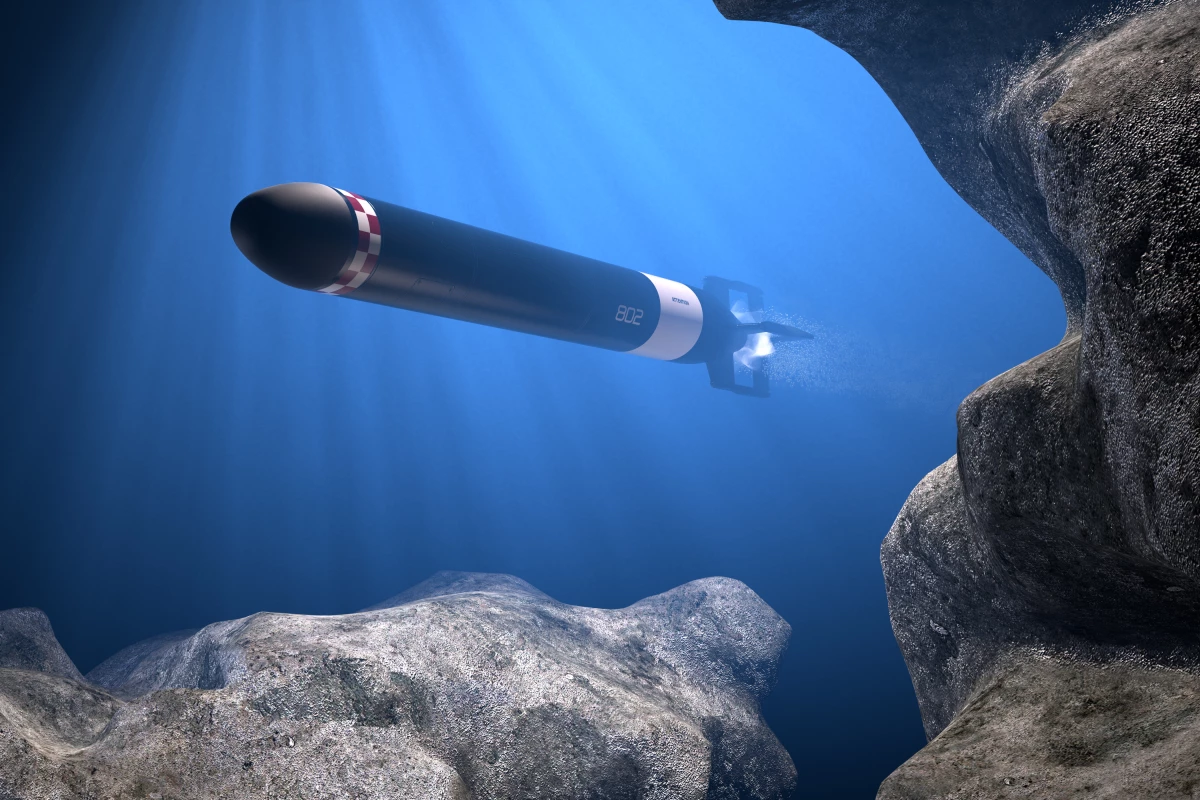This remarkable anti-ship weapon would run an innovative boron-powered ramjet engine that works in both air and water. Supersonic in the air and supercavitating under the water, it could strike farther and faster than any conventional torpedo.
A research team from the National University of Defence Technology in Changsha, Hunan province, has published plans for a 5-meter (16.4-ft) "cross media" anti-ship missile that's so fast that no existing ship defense system can defeat it, according to the South China Morning Post.
In the air, it would cruise at up to Mach 2.5, at altitudes about 10,000 m (32,800 ft), for distances up to 200 km (124 miles). It would then dive low and skim the waves for as much as 20 km (12.4 miles) to avoid detection. About 10 km (6.2 miles) from its target – or indeed, whenever necessary – it would plunge into the water and become a supercavitating torpedo, reducing drag by traveling in a bubble of air to maintain speeds up to 100 m/sec (224 mph/360 km/h).
It would produce enormous thrust while breathing air or seawater, due to a supersonic ramjet engine running on solid fuel rods containing around 60% boron, which reacts violently and produces enormous heat in either air or water. Boron has been used extensively in propulsion fuels, from jet fuel additives to solid nanotube fuels for hypersonic propulsion systems, but the research team says its cross-media ramjet engine is particularly innovative thanks to its high boron fuel content, and its ability to work above or below the surface.
But wait – aren't there already intercontinental ballistic missiles that operate in reverse, being fired underwater from submarines, then traveling thousands of miles through the air at hypersonic speeds? Yes – indeed, sub-surface-firing missiles have been around since early Cold War days. But the process is vastly different; missiles like the Trident II D-5 are effectively fired through the water stage of their journey by a steam cannon, which pops them up above the water level for long enough for their rocket engines to ignite and accelerate them into the stratosphere.
Work remains to be done to get this new cross-media engine under reliable control given the wide range of operating conditions and boron's tendency to act as both a solid and a fluid in a combustion chamber, which makes it particularly difficult to model. But the geopolitics here are also interesting – China imports about half its boron ore from the United States, making supply lines for these expensive raw materials uncertain should the two countries find themselves in conflict.
Source: South China Morning Post via Interesting Engineering





